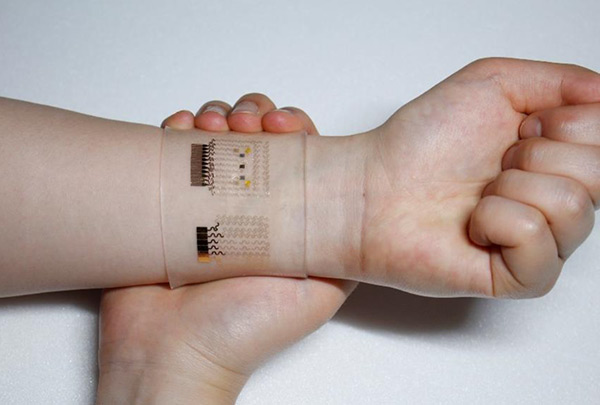A team of scientists from South Korea’s Institute for Basic Science has developed a wearable graphene-based patch that allows for diabetes monitoring and feedback therapy, all using human sweat.
To create the device, the researchers integrated electrochemically active and soft functional materials on hybrid of gold-doped graphene and a serpentine-shape gold mesh. The device’s pH and temperature monitoring functions are what enable the sweat glucose measurements since the enzyme-based glucose sensor is affected by pH (blood acidity levels) and temperature.

“Our wearable GP-based device is capable of not only sweat-based glucose and pH monitoring but also controlled transcutaneous drug delivery through temperature-responsive microneedles. Precise measurement of sweat glucose concentrations are used to estimate the levels of glucose in the blood of a patient,” said KIM Dae-Hyeong, a scientist from the Center for Nanoparticle Research. “The device retains its original sensitivity after multiple uses, thereby allowing for multiple treatments. The connection of the device to a portable/ wireless power supply and data transmission unit enables the point-of-care treatment of diabetes.”
How it works
According to the team, once the patch is applied to skin, it is activated by the production of sweat. At that time, the humidity sensor monitors an increase in relative humidity (RH). It takes an about 15 minutes for the sweat-uptake layer of the patch to collect sweat and reach a RH over 80%, at which time glucose and pH measurements are initiated.
The device also allows for non-invasive treatments. When abnormally high levels of glucose are detected, a drug is released into a patient’s bloodstream via drug loaded microneedles within the patch. According to the researchers, the malleable, semi-transparent skin-like appearance of the device provides easy and comfortable contact with human skin, allowing the sensors to remain unaffected by any skin disruptions.
“One can easily replace the used microneedles with new ones. Treatment with Metformin through the skin is more efficient than that through the digestive system because the drug is directly introduced into metabolic circulation through the skin,” said Hyeong. “These advances using nanomaterials and devices provide new opportunities for the treatment of chronic diseases like diabetes.”
The team demonstrated the device on two healthy males for its research. Glucose and pH levels of both subjects were recorded and a statistical analysis confirmed the reliable correlation between sweat glucose data from the diabetes patch and those from commercial glucose tests. The drug administering was tested on mice.

Comments are closed, but trackbacks and pingbacks are open.